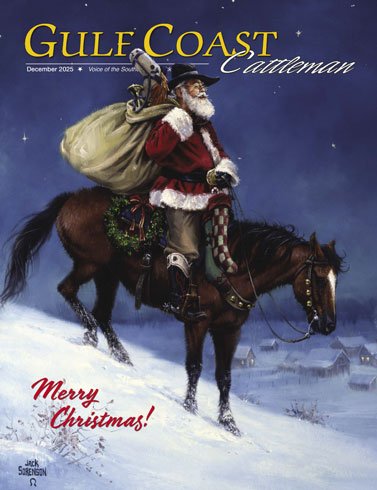Mississippi Beef Industry Enjoys Good Times
Bonnie A. Coblentz, Mississippi State University Extension
October 15, 2018
Mississippi State University experts see a positive outlook for the state’s beef cattle industry, with prices at profitable levels and herd numbers up.
MSU Extension Service beef specialist Brandi Karisch said there were about 930,000 cattle and calves in Mississippi as of Jan. 1. The state’s cattle industry has suffered no major challenges this year.
“We’re very fortunate that we have a mild climate where we can grow a lot of grass and effectively produce a lot of cattle on that grass,” Karisch said. “We have been fortunate that the weather has cooperated this year.”
By late summer, most of the state’s producers are weaning their calves and preparing them for market, where most will go west for finishing.
Mississippi producers raise cattle on nearly 16,000 farms across the state. As with most cattle farms in the Southeast, producers have an average of 30 head per farm. An aging farmer population challenges the beef industry, as it does in all agricultural sectors.
“We are starting to see more young people want to get involved in this industry,” Karisch said. “A lot of the younger producers want to get involved in the local foods movement, and we see a lot of innovation coming from these young farmers. They’re thinking about the way we’ve always done things, like managing and marketing, and asking, ‘How can we do it different?’”
Beef prices in the grocery store may be relatively high, but that does not automatically mean producers are making more money.
“The beef that is in the stores right now may have been sold off a farm in Mississippi when the calves were 8 or 9 months old, and they went through several phases until they were ready for harvest at about 18 months old,” she said. “It takes almost two years from when calves are born to when the beef hits the table.”
Josh Maples, an Extension agricultural economist, said retail beef prices are incredibly complex because of the number of products that each animal produces.
“There are different market factors for each cut of meat,” Maples said. “Cattle and beef prices generally move together, but it is not a perfect correlation.”
For the second week of September, the statewide auction average for 500- to 600-pound steers was $143.50 per hundredweight, which is almost the same price it was at this time in 2017.
“Cattle prices have shown strength despite larger supplies of cattle around the country,” Maples said. “In the long term, larger beef production puts downward pressure on prices, but strong demand has offset some of the potential price impacts of larger supplies.”
There has been a 15 percent increase in U.S. beef production in the past three years, but prices have remained fairly strong because there is a very strong domestic and international demand for U.S. beef. Currently, lower grain prices and the potential for a great winter forage crop are supporting stronger calf prices.
MSU has several beef herds at different facilities, including the South Mississippi Branch Experiment Station in Poplarville where Daniel Rivera works.
“The beef industry has three segments: cow-calf, stocker and feedlot,” Rivera said. “Although there are a couple of niche producers in the state who finish beef cattle, Mississippi does not have a dedicated feedlot industry like they have in some other states.”
Rivera, a researcher with the Mississippi Agricultural and Forestry Experiment Station and an Extension beef cattle nutritionist, said MSU has dozens of ongoing research projects that support the cow-calf and stocker parts of the industry.
Some of these projects include examination of the management of ryegrass baleage fed to cattle; cattle marketing at sale barns compared to special sales; specific traits of cattle that might influence price; forage management and production studies; genetic studies examining mothering ability in beef cows; and hair coat shedding as it relates to heat tolerance.

